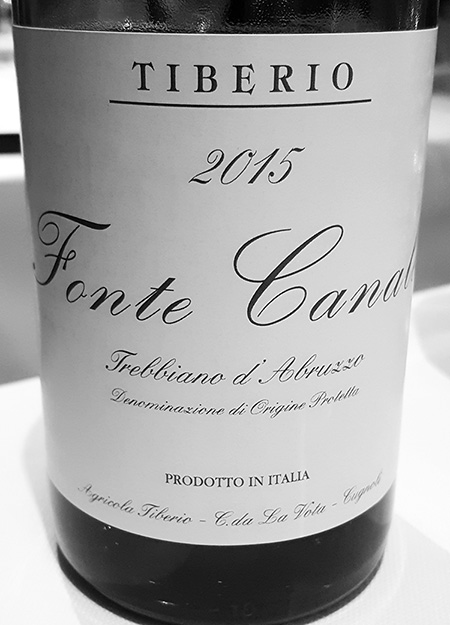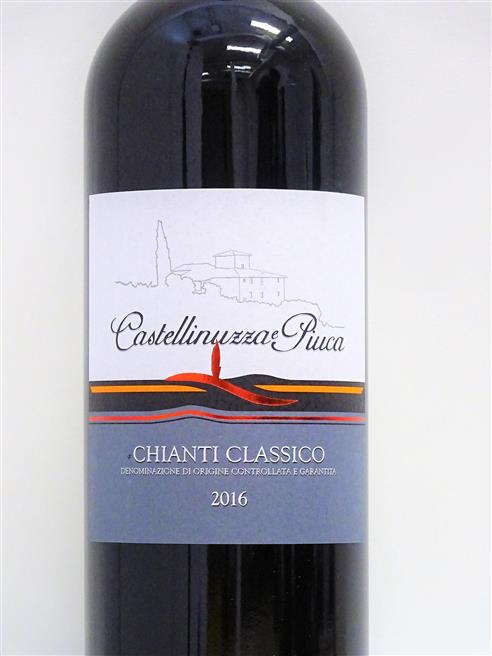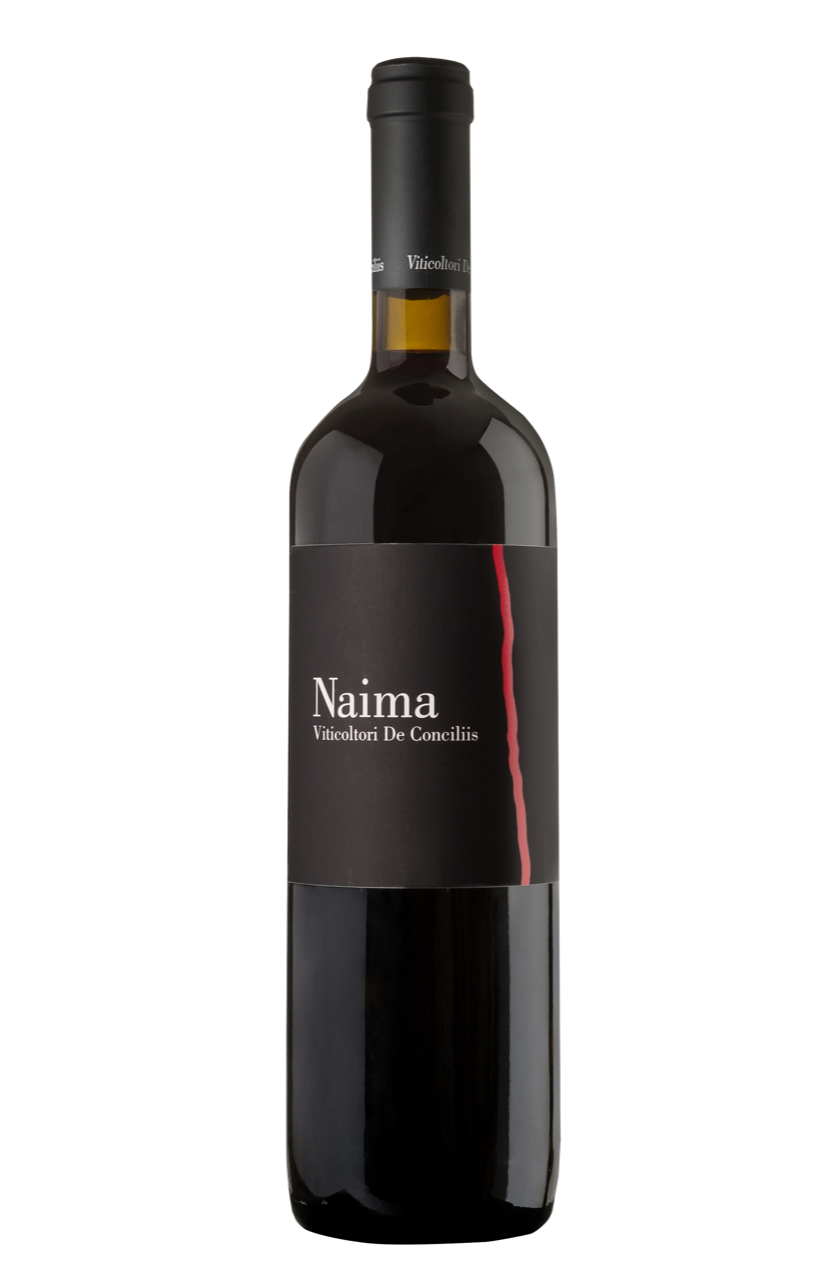The New York Times – I migliori tre vini italiani (su 12) consigliati da Eric Asimov come atto d’amore
di Antonio Prinzo
Eric Asimov critico enogastronomico per il NYT traccia un bilancio e sceglie i suoi 12 vini che hanno lasciato ricordi ed emozioni in questo 2019. È un approccio libero, perché quando sono i sentimenti che prevalgono l’incontro con il vino è un atto d’amore.
Dodici vini di tutto il mondo indicati in ordine cronologico e tre sono gli italiani, vi lascio le sue parole in inglese, è facile tradurle, ma è bello leggerle come sono state scritte:
Tiberio Trebbiano d’Abruzzo Fonte Canale 2015

Tiberio Fonte Canale 2015
“Ho particolarmente amato il Fonte Canale 2015, un vino splendido e intenso, salino e minerale”
In late March, Cristiana Tiberio of Agricola Tiberio in Abruzzo, Italy, visited New York to offer a tasting of six vintages of Fonte Canale, a single-vineyard wine made from an 80- to-90-year-old vineyard of trebbiano Abruzzese.
Trebbiano is a ubiquitous white grape in Italy, and generally makes unmemorable wine. But trebbiano Abruzzese is distinct, relatively rare and potentially superior. From this old vineyard, planted in limestone, sand and marl, the wines were exceptional.
I especially loved the 2015 Fonte Canale, a gorgeous, intense wine with salty, minerally flavors. This wine is hard to find and relatively expensive at $65 or so. Luckily, Tiberio also makes a
$20 Trebbiano d’Abruzzo that, if it doesn’t have the depth, intensity or complexity of the Fonte Canale, at least suggests the potential of the trebbiano Abruzzese grape when done right.
Castellinuzza e Piuca Chianti Classico 2016

Castellinuzza e Piuca
“era sorprendentemente puro e fresco, con aromi di amarena e terra, rinfrescante con un tocco di mistero, avvincente sorso dopo sorso nell’intento di scoprirlo”
Chianti Classico has been one of my favorite wines for years. I love the sangiovese grape and its graceful red fruit flavors, tempered by a refreshing bitterness and dusty tannins, which come from growing sangiovese in the hills of the Classico region.
I wrote
about the wine
in June not only because I love it, but also because it seemed to me that Chianti Classico was widely underestimated, even written off, by those who had found newer, shinier objects in wine. As a side benefit, I drank a lot of Chianti Classico in preparation and research, which of course is the burden of the wine writer.
Of many excellent Chiantis, none of the wines made as strong an impression on me as a 2016 Chianti Classico from Castellinuzza e Piuca, a tiny property just outside Greve in Chianti. The wine, made of 90 percent sangiovese and 10 percent canaiolo, was stunningly pure and fresh, with flavors of bitter cherry and earth, refreshing with just a touch of mystery, compelling sip after sip in an effort to unravel it.
It had the quality that the French call digestibilité, in which you can drink a lot of a wine without it weighing heavily on you. I will have to learn the Italian term.
De Conciliis Paestum Aglianico Naima 2010

Naima
“I profumi erano profondi e meravigliosi: i frutti scuri si evolvono nel regno della terra, liquirizia e catrame. Era una bottiglia gioiosa, a cui non riesco a smettere di pensare”
At
Don Angie in New York in early November, I drank a 2010 De Conciliis Naima from the Paestum region of Campania.
The wine was 100 percent aglianico, a reminder of how great this red grape can be when grown on the volcanic soils of its home territory in southern Italy. Bottles intended to be fresh and fruity can be enjoyed right away, but wines like Naima, named for a John Coltrane ballad, need time.
At nine years, the tannins were resolving but still gave the wine spine and structure. The flavors were deep and beautiful — dark fruits evolving into the realm of earth, licorice and tar. It was a joyous bottle, and one that I cannot stop thinking about.
Non posso negare una grande soddisfazione nel vedere tra i vini italiani il Naima dei Viticoltori De Conciliis, Aglianico in purezza, ma soprattutto Cilentano. Un territorio in crescita, che varca i confini e si fa apprezzare. Lentamente, con costanza e testardaggine, è così questa terra.
Qui l’articolo di Eric Asimov per scoprire tutti i suoi vini del 2019.
3 Commenti
I commenti sono chiusi.

NAIMA.Il canto del cigno.Superbo stappato a Natale su un capretto al forno niente male.PS Il Cilento che sapeva fare e sapeva far parlare che invece ha deciso di farsi male.FM
Un capretto al forno. Come fate ad uccidere cuccioli, esseri indifesi, per riempirvi la buzza, per soddisfare il palato? Il vostro egoismo è sconfinato. Forse un giorno l umanoide depravato si renderà conto dei suoi scempi e spero presto paghi di tutta la sua crudeltà. Intanto auguro strozzamenti e crepamenti di stomaco. Si, sono cattiva, mai quanto voi.
https://www.youtube.com/watch?v=BtNj1EaxiW4